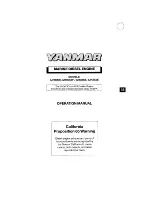
Publication LZ-UM001A-EN-P - January 2008
Installation
17
Motor-Hall Phasing and
Sequence
The LZ linear motor family is compatible with off-the-shelf brushless motor
servo drives. The servo drive will see them as a two-pole motor with a full
electrical cycle of 60 millimeters (360 degrees equivalent rotary motion).
The brushless motor drives and controls must have two control functions for
suitable commutation of a linear motor.
•
Upon power-up, the servo drive must be able learn where the motor
electrical coil phases are with respect to the north and south magnetic
fields, and align its three phase drive current accordingly.
•
The servo drive must be able to control the direction and magnitude of
current through the three phases of the coil as it moves across the
magnetic field.
Linear motors with Hall sensors (LZ -
xxx-x xxx-x-x
-T-
x-x
) can be used for
Hall commutation feedback with brushless motor servo drives. See the
relationship of the digital Hall signals to the back EMF of the motor coils in
the diagram on page 18. These signals can be used in two ways:
•
When using Hall-start-up, upon power-up, the brushless servo drive
reads the state of the three digital Hall signals to approximate the motor
coil location with respect to the magnetic field. The drive then switches
to a fine sinusoidal commutation based on a the high resolution linear
encoder feedback. A high resolution in encoder must be install in your
system to use this feature.
•
Some drives will perform trapezoidal commutation based solely on the
feedback from the digital Hall signals.
As shown in the phasing diagram:
S1 is in phase with W-U back EMF
S2 is in phase with U-V back EMF
S3 is in phase with V-W back EMF
Phase sequence = S1 leads S2 leads S3. Spacing is 120 degrees.
IMPORTANT
For optimal commutation and force generation, the selected
brushless servo motor drive must be compatible with the LZ
series phasing, and be wired to the motor coil correctly.
ATTENTION
Incorrect motor and Hall wiring can cause runaway conditions.
IMPORTANT
Phasing direction = the coil toward the motor power cable or
the magnet assembly away from the power cable.
















































